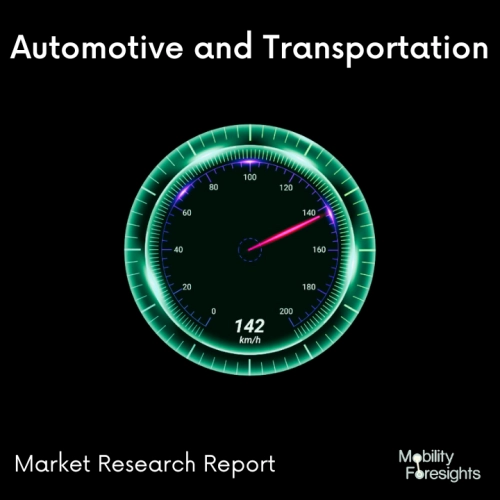
- Get in Touch with Us

Last Updated: Apr 25, 2025 | Study Period: 2023-2030
LCVs and MCVs are two types of commercial vehicles that are primarily made for the transportation of people or cargo that falls within a specified weight range. These vehicles are frequently used for a variety of tasks, such as delivery services, the movement of products, building projects, and the transfer of passengers.
LCVs (light commercial vehicles): Gross vehicle weight (GVW) for LCVs normally ranges from 3,500 kilogrammes (7,716 pounds) to 7,000 kilo grammes (15,432 pounds).Vans, pickup trucks, minibusses, and compact cargo vehicles are a few examples of LCVs.
LCVs are frequently utilized for utility reasons, small-scale commodities transportation, courier services and local deliveries.LCVs have the traits of being smaller, more maneuverable, and appropriate for urban or suburban settings.
MCVs (medium commercial vehicles):Weight Range: The GVW of MCVs typically ranges between 7,000 and 16,000 kilogrammes (15,432 and 35,274 pounds).Examples of MCVs include buses, box trucks, huge cargo vans, and medium-sized vehicles.
MCVs are utilized for a variety of tasks, such as medium-scale passenger transportation, intercity transportation, regional distribution, and intercity transportation.
MCVs have a bigger size and more power than LCVs. They provide more passenger seating options, more load-bearing capability, and more cargo space. MCVs frequently have dual cargo and passenger transit designs.

TheGlobal Light And Medium Commercial Vehicle Market accounted for $XX Billion in 2022 and is anticipated to reach $XX Billion by 2030, registering a CAGR of XX% from 2023 to 2030.
Diesel, petrol, natural gas, and electric vehicles (EVs) are among the powertrain options. The data demonstrates that the conflict in Ukraine had a domino effect on all spheres of the world economy, with the general mood of business suffering greatly.
Due to supply chain problems brought on by the war, inflation reached previously unheard-of levels worldwide, which led several central banks to raise interest rates. As a result, funding new equipment became more expensive.
Fuel costs rose sharply as a result of unstable energy markets, cutting into fleet owners' profit margins.The European truck market shrank in 2022. The resurgence of COVID-19 throughout most of the nation in 2022, which prompted lockdowns and strict curfew regulations, caused the truck market in China to collapse.
The number of electric automobile types on the market is rising as society electrifies. The number of possibilities in 2022, were more than triple from 2018â2019 and up in 2021. Similar to previous years, China has the widest selection of models with almost 300 readily available, which is double as many as was the case in 2018â2019, before the Covidâ19 epidemic.
This is still more than three times as many models as were accessible before the epidemic in Norway, the Netherlands, Germany, Sweden, France, and the United Kingdom, which all have about 150 models available. Less than 100 models were accessible in the United States in 2022, although it was more than twice as many as there were before the epidemic; fewer models were also available.
| 1 | Market Segmentation |
| 2 | Scope of the report |
| 3 | Abbreviations |
| 4 | Research Methodology |
| 5 | Executive Summary |
| 6 | Introduction |
| 7 | Insights from Industry stakeholders |
| 8 | Cost breakdown of Product by sub-components and average profit margin |
| 9 | Disruptive innovation in the Industry |
| 10 | Technology trends in the Industry |
| 11 | Consumer trends in the industry |
| 12 | Recent Production Milestones |
| 13 | Component Manufacturing in US, EU and China |
| 14 | COVID-19 impact on overall market |
| 15 | COVID-19 impact on Production of components |
| 16 | COVID-19 impact on Point of sale |
| 17 | Market Segmentation, Dynamics and Forecast by Geography, 2023-2030 |
| 18 | Market Segmentation, Dynamics and Forecast by Product Type, 2023-2030 |
| 19 | Market Segmentation, Dynamics and Forecast by Application, 2023-2030 |
| 20 | Market Segmentation, Dynamics and Forecast by End use, 2023-2030 |
| 21 | Product installation rate by OEM, 2023 |
| 22 | Incline/Decline in Average B-2-B selling price in past 5 years |
| 23 | Competition from substitute products |
| 24 | Gross margin and average profitability of suppliers |
| 25 | New product development in past 12 months |
| 26 | M&A in past 12 months |
| 27 | Growth strategy of leading players |
| 28 | Market share of vendors, 2023 |
| 29 | Company Profiles |
| 30 | Unmet needs and opportunity for new suppliers |
| 31 | Conclusion |
| 32 | Appendix |